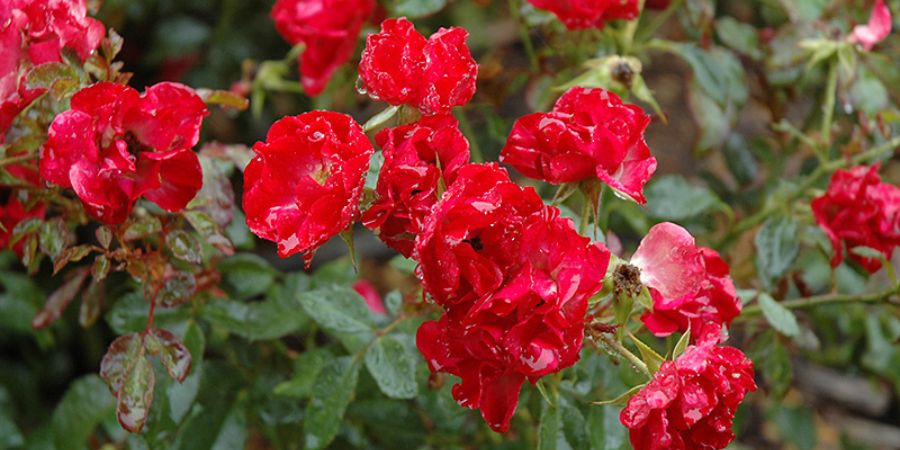Roses are beloved for their beauty and fragrance, but they can be susceptible to various diseases and pests. At Applewood Nursery & Landscape Supply, we want to help you keep your roses thriving. Here, we identify common issues that affect roses, especially in the Midwest, and offer treatment and preventive measures to ensure your garden blooms beautifully.
Common Rose Diseases
Black Spot
Black spot is a fungal disease characterized by black spots on leaves, which eventually turn yellow and fall off. It thrives in humid conditions, making Midwest summers particularly problematic.
Treatment: Remove and destroy affected leaves. Apply a fungicide specifically labeled for black spot. Ensure good air circulation around your roses by proper spacing and pruning.
Prevention: Water roses at the base to keep foliage dry. Mulch around the base to prevent water splashing onto leaves. Select resistant varieties such as ‘Knock Out’ and ‘Flower Carpet’ roses.
Powdery Mildew
Powdery mildew appears as a white, powdery coating on leaves, stems, and buds. It’s most prevalent in dry, warm conditions with high humidity.
Treatment: Prune infected parts and dispose of them. Apply a fungicide designed for powdery mildew.
Prevention: Ensure proper spacing for air circulation. Water in the morning to allow foliage to dry throughout the day.
Rust
Rust is identified by orange or rust-colored spots on the underside of leaves. This disease thrives in warm, moist conditions.
Treatment: Remove and destroy infected leaves. Use a fungicide that targets rust.
Prevention: Water roses at the base and maintain good air circulation.
Common Rose Pests
Aphids
Aphids are small, soft-bodied insects that cluster on new growth, sucking plant sap and causing deformed leaves and buds.
Treatment: Spray plants with a strong jet of water to dislodge aphids. Use insecticidal soap or neem oil.
Prevention: Encourage beneficial insects like ladybugs and lacewings that feed on aphids. Regularly inspect your roses for early signs of aphids.
Japanese Beetles
Japanese beetles are metallic green and bronze beetles that chew on flowers and leaves, causing significant damage.
Treatment: Handpick beetles in the morning when they are less active. Use traps away from your rose bushes or apply an insecticide labeled for Japanese beetles.
Prevention: Planting garlic, chives, or rue nearby can help repel these beetles. Apply milky spore powder to your lawn to kill larvae.
Spider Mites
Spider mites are tiny arachnids that cause stippling on leaves, leading to a bronzed appearance and potential leaf drop.
Treatment: Spray with water to reduce mite populations. Use insecticidal soap or horticultural oil.
Prevention: Keep plants well-watered and stress-free. Introduce predatory mites to control spider mite populations naturally.
Preventive Measures for Healthy Roses
- Proper Planting Location: Choose a sunny spot with at least six hours of sunlight daily. Ensure good air circulation to prevent disease.
- Soil Health: Use well-draining soil rich in organic matter. Regularly amend soil with compost.
- Watering Practices: Water roses deeply at the base to avoid wetting foliage. Mulch to retain moisture and suppress weeds.
- Pruning and Maintenance: Prune roses in early spring to remove dead or diseased wood and improve air circulation. Regularly deadhead spent blooms to encourage new growth.
- Fertilization: Use a balanced rose fertilizer according to package directions. Avoid over-fertilizing, which can attract pests.
- Regular Inspections: Frequently inspect roses for early signs of disease or pests. Early detection makes treatment more effective.
By following these guidelines, you can keep your roses healthy and vibrant throughout the growing season. At Applewood Nursery & Landscape Supply, we’re here to provide you with the best plants, products, and advice for your gardening success.

